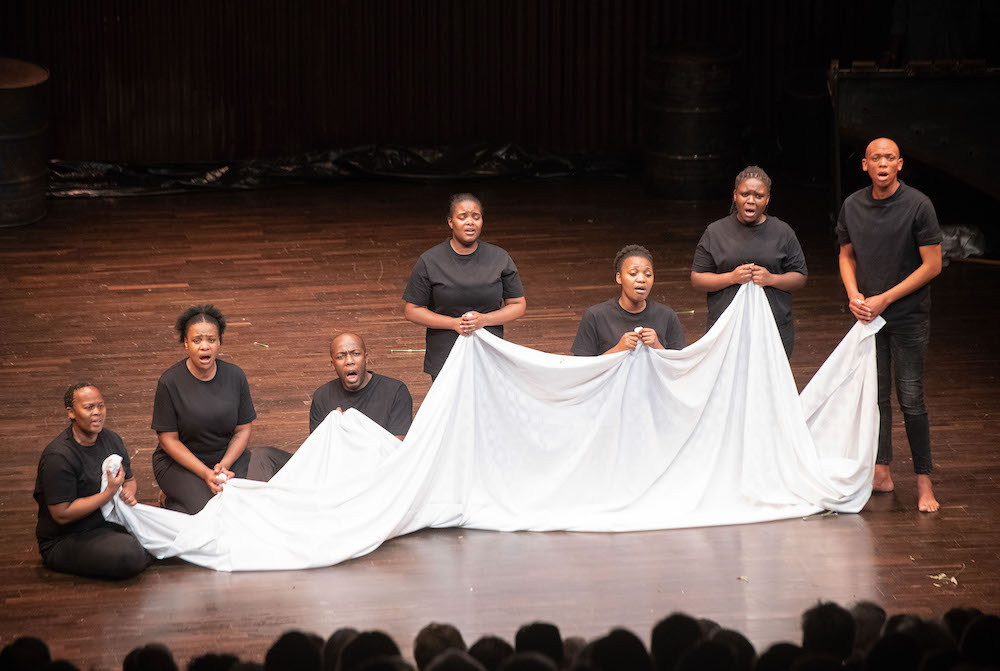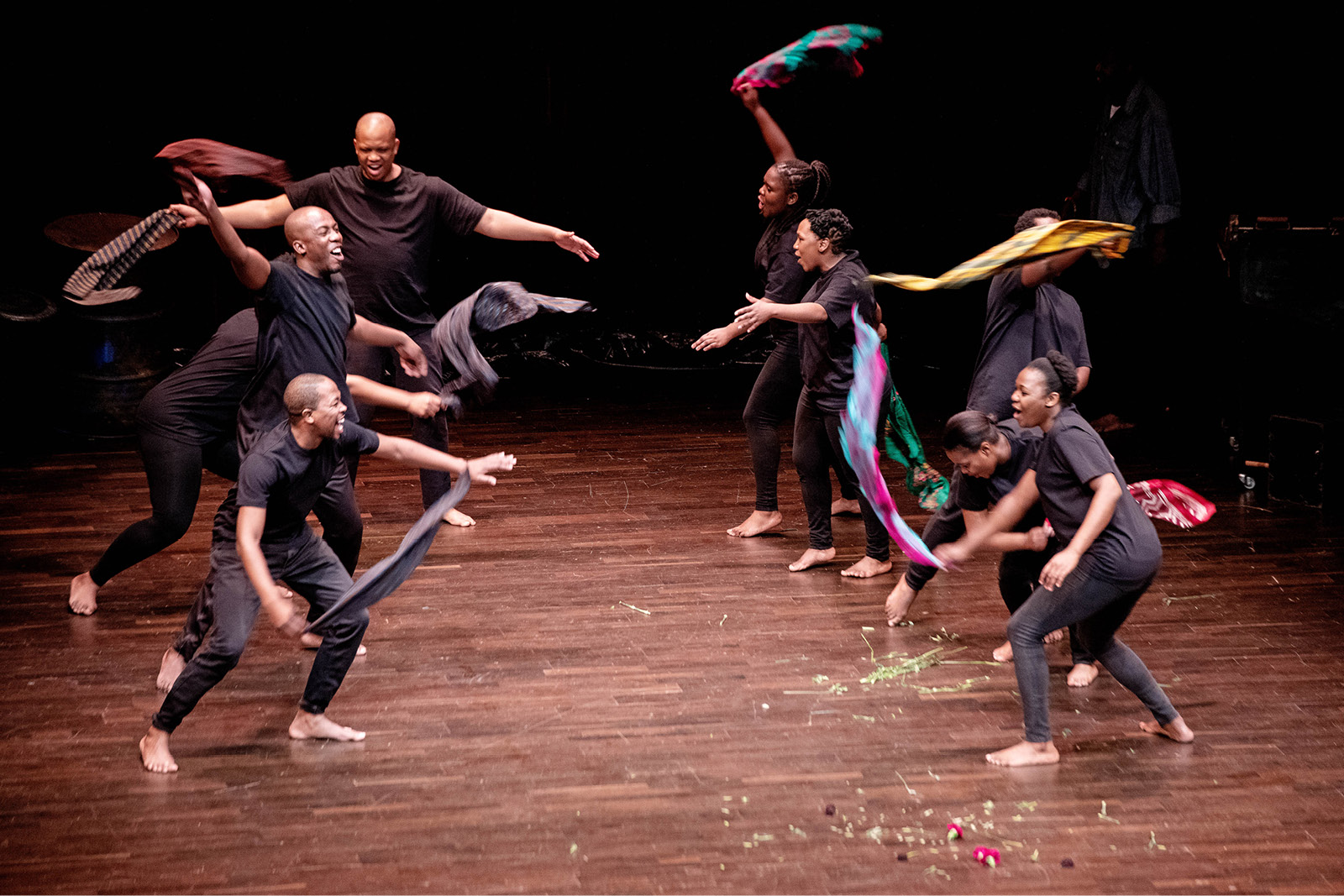The Isango Ensemble’s stirring a cappella rendering of the Lutheran hymn O Lamm Gottes, unschuldig, sung in English translation, has a raw and affecting power, and it becomes a recurring motif in the South African theatre troupe’s reimagining of Bach’s St Matthew Passion. The group has made a career, in part, out of re-examining Western canon works from a South African perspective – they have tackled Mozart’s The Magic Flute (which came to the Melbourne Festival in 2011), Puccini’s La Bohème and Britten’s Noye’s Fludde, for example – but this is their first time taking on a major oratorio.
 Isango Ensemble’s St Matthew Passionat the Bergen International Festival. Photo © Helge Skodvin
Isango Ensemble’s St Matthew Passionat the Bergen International Festival. Photo © Helge Skodvin
Simply staged against a backdrop of corrugated iron, marimbas lining the sides of the stage, this production, directed by Mark Dornford-May, premiered at the Bergen International Festival in May and retells the Passion story in a little over an hour, with Bach’s music, in arrangements for marimba, mingling with African laments and traditional songs, in a rich melding by Music Director Mandisi Dyantyis, who also stars as a soulful Christ.
As in SS Mendi: Dancing the Death Drill, vigorous dance numbers and music drive the narrative, but weaving the musical numbers together is also English dialogue, taken from the Chester Cycle of Mystery Plays, as well as Xhosa and Afrikaans, and the narrative is filled out beyond that covered by the Passion, including the rising of Lazarus, with Bach’s music sounding particularly celebratory on marimba, and a festive entrance into Jerusalem – one of many visually wonderful moments choreographed by Lungelo Ngamlana.
 Isango Ensemble’s St Matthew Passionat the Bergen International Festival. Photo © Helge Skodvin
Isango Ensemble’s St Matthew Passionat the Bergen International Festival. Photo © Helge Skodvin
In adapting the story of Christ’s final days, this production focuses on Jesus as a teacher fighting social injustice in an occupied state, and that plays out in effective ways, particularly in the use of language – Pilate questions Christ in English, for example, while he answers in his own language. Between the abstract reflections of the Bach, the multiple languages – including the 15th-century English – and a reverberant Concert Hall acoustic in which sometimes the details of the text were obscured, the drama may have been rather opaque for those unfamiliar with the landmarks of the Gospels. But iconic moments came through clearly – the disciples gathered behind a long sheet immediately evoked Leonardo da Vinci’s The Last Supper, and the crucifixion itself, on a steel ladder, was heart-rending, accompanied by wailing lament and O Lamm Gottes, unschuldig. There were many fine vocal moments – particularly notable was Nolubabalo Mdayi’s ringing account of the alto aria Buß und Reu and Nontsusa Louw’s soprano aria Blute nur, du liebes Herz! over anxious marimba harmonies – but it was the a cappella chorale numbers that really hit home.
In this piece the storytelling was less direct than in SS Mendi, and dramatically the work felt slow (in fairness, the almost three hours of the original Bach doesn’t always trip along) but there was an incredible freshness, energy and beauty to the melting pot of musical cultures on offer, which gave Isango Ensemble’s St Matthew Passion a deeply satisfying emotional core, capturing both the pain and grief of Christ’s crucifixion, and – in rhythmic, celebratory dance – the joy of the Resurrection.
Brisbane Festival runs until September 28











Comments
Log in to join the conversation.